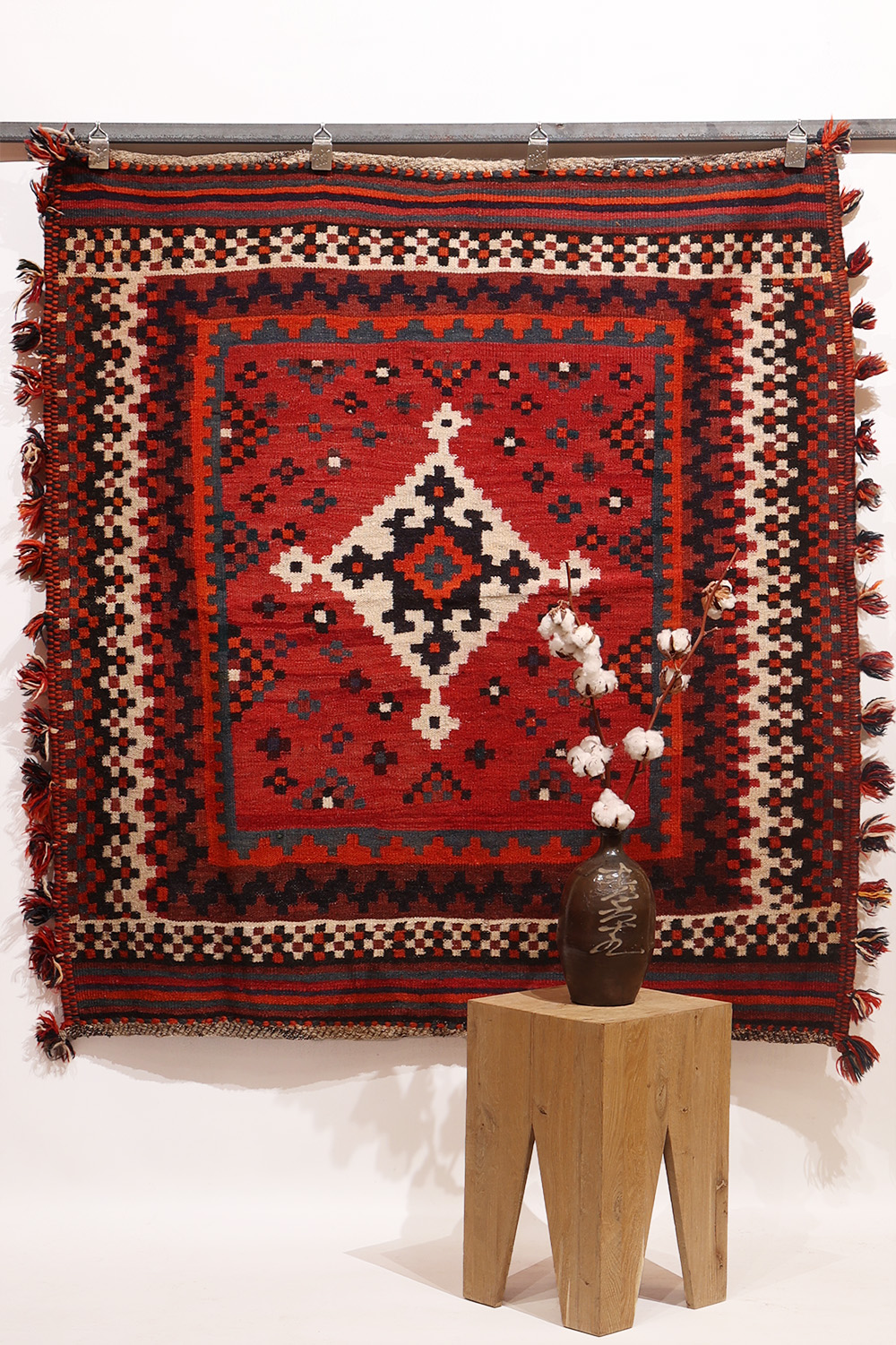A semi-antique Arabic sofreh, or bread-making kilim, featuring a large central medallion. Surrounding the medallion are square-shaped motifs that repeat throughout the various borders. This kilim is exceptionally sturdy, making it ideal for high-traffic areas.
Material: 100% hand-spun sheep wool
Size: 142×132 cms
Origin: Qashqai tribe, Iran
Date of weaving: 1960s
Sofrehs take their name from the Farsi (Persian) word for cloth and are used for several functions connected with preparing and eating food. Eating cloths are normally referred to simply as sofrehs and vary enormously in size-from small, rectangular mats for personal use to extremelly long, narrow runners for communal eating. They are woven in several standard techniques, including alternating bands of kilim and pile rug, and produced by a number of nomadic and tribal weavers in Iran, Afghanistan, Central Asia and to a lesser degree, elsewhere.
Turkic-speaking pastoral nomadic tribal groups began entering central and southern Iran during the eleventh and twelfth centuries.The Qashqai, as a large tribal unit, dates back at least to the early eighteenth century, when some Turkish(Turki)-speaking tribal groups in the region existed under the name Qashqai.
Qashqai kilims are best known for their boldness and and freedom in the way the pattern is drawn. An aesthetically pleasing geometry, the fineness of their wool and their clear, strong colours combine to ensure their reputation as superlative examples.
| Weight | 5 kg |
|---|




